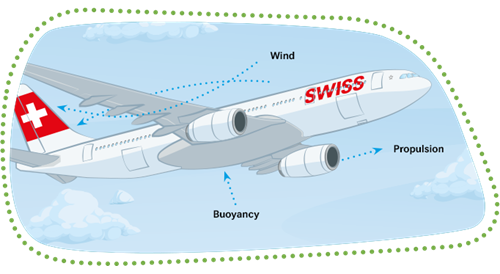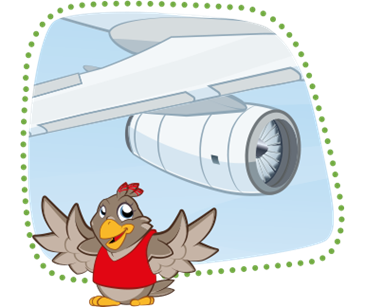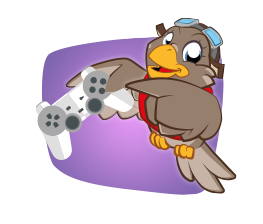
Bernie: "That is a really good question, Lisa. If you have already thrown a stone up into the air, you will have no doubt noticed that it quickly drops back down to the ground. That is due to gravity.
Airplanes are much bigger and heavier than a stone and yet they still remain in the air. However, they look a bit like birds with their wide wings and can ultimately also fly - like Lexi."

Lexi: "That's right, Bernie. The wings of an airplane have a special shape, which is very important.
They enable fast currents of air to flow under the wings and this pushes the aircraft upwards. We call this buoyancy."
Bernie: "But buoyancy alone doesn't suffice to enable an aircraft to fly. It also has to move forwards. To this end, they are equipped with engines that are located beneath the wings. You have probably already seen these huge machines before, haven't you? They generate the so-called propulsion.
If the airplane is fast enough when setting off, it can take off as a result of the propulsion and buoyancy. This is also how the biggest airplanes of the SWISS fleet get up into the sky!"






